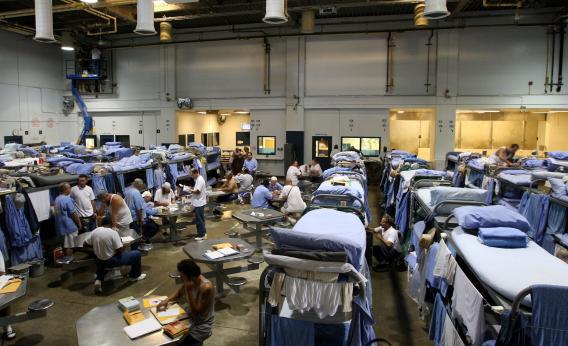The United States has the highest incarceration rate in the world. ProPublica has rounded up some of the best investigative journalism on U.S. prisons and the problems that plague them. These stories cover juvenile justice, private prisons, immigration detention and other aspects of America’s vast incarceration system.
Louisiana Incarcerated: How We Built the World’s Prison Capital, Times-Picayune, May 2012
Louisiana’s incarceration rate tops the U.S.’s, Iran’s and China’s. This eight-part series explains how it got there: lobbying from private prison companies, cash-strapped municipalities, harsh sentencing, and limited rehabilitation for those who make it out.
America’s Expensive Sex Offenders, Salon, April 2012
Programs that keep some sex offenders detained indefinitely after their criminal sentences are up have grown drastically in recent years, and so has their cost—“civil commitment” is on average four times as expensive as prison. But releasing sex offenders has proven politically fraught. (For a few state-by-state investigations, see these muckreads on Washington, Virginia, and New York.)
Bail Burden Keeps U.S. Jails Stuffed With Inmates, NPR, January 2010
Thousands of inmates are stuck in jail for petty, nonviolent crimes simply because they can’t make bail. This NPR series showed how the country’s bail system “exists almost solely to protect the interests of a powerful bail bonding industry.”
What the Jail Guard Saw, Village Voice, July 2007
Some guards at New York City’s prison island, Rikers, weren’t just turning a blind eye to violence—they were encouraging it. The Voice has been covering the fallout from Rikers’ “Fight Club” ever since, and five years later, they obtained gruesome photos showing rampant violence persists, despite the Correction Department’s efforts.
Hellhole, The New Yorker, March 2009
Atul Gawande looked at the widespread use of isolation in U.S. Prison, which has ballooned in the past 20 years. At least 25,000 prisoners are now held in isolation just in so-called supermax prisons. And their minds can quickly degrade. “The experience,” Gawande writes, “typically leaves them unfit for social interaction.”
Why Are Prisoners Committing Suicide in Pennsylvania? The Nation, April 2012
An investigation the effects of solitary confinement on mentally ill prisoners in Pennsylvania. Also see this account from the Arizona Republic: 19 prisoners in Arizona have killed themselves in the last two years, many of them while in solitary confinement—a widespread practice in the state.
The Devil’s Playground, Westword, February 2011
Earlier this year the Justice Department laid out new rules aimed at eliminating widespread sexual abuse in U.S. prisons. This article chronicles the ordeal of one inmate who tried to report rape in a Colorado prison.
Uncompromising Photos Expose Juvenile Detention in America, Wired, April 2012
America locks up children at a quicker rate than all other developed countries, with about 60,000 juveniles imprisoned on any given day. Photographer Richard Ross spent five years photographing the little-seen conditions inside 350 correction centers across the U.S.
For Teens Guilty of Murder, Penalties Can Vary Widely, New England Center for Investigative Reporting, December 2011, and Direct Fail: Colorado’s Policy of Sending Teens to Adult Court, 5280, December 2011
In light of the Supreme Court’s decision this week to strike down mandatory life-without-parole sentences for juveniles, it’s worth revisiting these exposes of juvenile justice in Colorado and Massachusetts, two states that often sentence teens as adults.
A Death in Texas: Profits, Poverty and Immigration Converge, Boston Review, December 2009
Privately run immigration detention facilities have proliferated along the U.S.-Mexico border. But the small towns where they’re located have rarely benefited. (Such tales aren’t limited to the border, as this report from Georgia tells.)
Private Prisons Profit From Immigration Crackdown, Federal And Local Law Enforcement Partnerships, Huffington Post, June 2012
The country’s two largest private prison companies have spent tens of millions on lobbying in the past decade and doubled their campaign contributions, as the government launched tougher immigration rules. Since 2005, they’ve also more than doubled their revenues from immigration detention.
